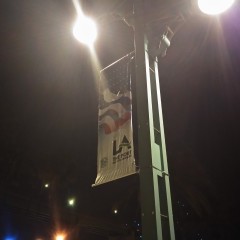ZTE isn't a new company by any means and has been producing a steady flow of mobile devices over the past decade. While the firm has generally been flying under the radar producing lower to mid-range handsets, they made a bit of splash globally last year with the Axon 7.
While it might have been a bit early to expect a new flagship in January at CES 2017, ZTE did have something new in tow at the show with its affordable mid-range handset, the Blade V8 Pro. The handset offered an impressive set of specifications spear-headed by a dual 13MP camera and $229.98 price tag. So can ZTE's latest disrupt an already crowded bracket? Let's find out.
Specs
| ZTE Blade V8 Pro | |
|---|---|
| Display |
5.5-inch 1080p display with Corning Gorilla Glass 3 |
| Processor | Qualcomm Snapdragon 625 |
| Graphics | Qualcomm Adreno 506 |
| RAM | 3GB |
| Storage | 32GB with microSD support up to 128GB |
| Connectivity | 802.11 a/b/g/n/ac, 2.4GHz & 5GHz Bluetooth 4.2 GPS/A-GPS/SUPL |
| Camera |
13MP + 13MP (monochrome) rear camera |
| Ports | USB Type-C |
| Sensors | Accelerometer Gyroscope Light sensor Proximity sensor |
| Battery | 3,140mAh with Quick Charge |
| Launch OS | Android 6.0.1 (Marshmallow) |
| Launch Date | January 2017 |
| Size & Weight |
6.14" x 3.03" x 0.36" |
| Price |
$229.98 USD (no contract) |
Design Display Sound
When I initially held the Blade V8 Pro at CES, there was a bit of angst towards the idea that a company in 2017, building an affordable mid-range handset, would opt for anything else but metal. But, after being able to really hold the device for a good amount of time, I can honestly say that I like the feel of the phone. The layering of glass, metal and unique soft touch plastic backing on the rear are melded together in a way that gives the impression that this is not a cheap device and it also is fairly satisfying to the touch.

The front contains a 5.5-inch 1080p display that can look good in certain conditions. It isn’t the brightest screen that I have experienced, but it feels comfortable on the eyes even on max brightness. This perhaps becomes a bit of hindrance when venturing outdoors, where the screen itself doesn’t get bright enough to counteract the effects of the sun. While a majority of handsets struggle when exposed to the sun, the Blade V8 Pro actually has its own issue that comes from a reflective sheen that glazes over the screen. This effect makes it extremely difficult to see what is being displayed but can be corrected by angling the handset. I have seen this in a couple of handsets over the past several months and most likely has to do with the way the way the panel is constructed.

There is also the matter of the handset's touch sensitivity. I know this may sound a bit odd considering we are in 2017 and capacitive screen technology is usually quite good, but there is something in the way the Blade V8 Pro screen handles sensing touch that is a bit off. When initially handling the device, I had lots of issues in regards to how it detects inputs, often missing vital gestures when passing a finger over text or scrolling through a web page. I found that it was extremely picky when it came to contact points with the fingers. For example, when swiping a finger over text, at certain points I would start making less contact with the fleshy part of my finger and more with the fingernail, in these moments, it would stop detecting input.
The same would happen when flicking the screen to unlock the phone, or scroll through webpages. In order to get accurate tracking, you would have to place your finger flat on the surface, which isn't very natural and something that I have never done on a smartphone. I know that capacitive technology isn’t the most accurate when tracking non-conductive materials like a finger nail, but the display on the ZTE doesn’t provide any leeway and is extremely unforgiving compared to numerous, or honestly all, previous handsets that I have tested.

Below the display, ZTE opts for capacitive navigation buttons, that can be customized in two different ways. In the middle, lies the home button that also acts as a fingerprint reader. Like most handsets on the market today, the fingerprint reader is extremely quick and also accurate.

The top layer of the device melds to the metal rim of the Blade V8 Pro thanks to its use of 2.5D glass. The rim gives the handset a nice bit of contrast from the all black front portion thanks to its gun metal color and chamfered silver accents. This component is what gives the handset its weight and brings rigidity and a feeling of sturdiness to the device. You have your standard buttons like volume and power on the right hand side, which are also metal and provide nice tactile feedback. On the left side, there is a SIM tray, that with the option of accepting either dual nano SIMs or a combination of a nano SIM and microSD card up to 128GB.

The rear of the device houses the dual 13MP camera with dual LED flash. The camera is surrounded by a soft-touch plastic that feels good in the hand and provides added texture and design with its diamond shaped pattern. Like I said before, I didn’t like the feel of this initially, but it’s definitely one of the better executed plastic rear covers I have recently handled. As a whole, the three layers of the Blade V8 Pro combine surprisingly well and purvey a very refined experience and a fairly handsome look.
Software / Performance / Battery


The ZTE comes with a skinned version of Android that is running on version 6.0.1 Marshmallow with the December security update. Although it does offer a slightly different experience, ZTE did its best to try and mimic the stock Android experience. There are quite a few options in the settings menu but things are kept clean by separating the "extras" in a ‘customized features’ section.


Overall, things feel extremely zippy and there haven't been indications of slow down during the couple weeks of use. As for the ZTE menu, there are a small number of customizations that are offered, like its automatically updating wallpaper app, setting fingerprints to activate certain apps from the lock screen, gesture / motion commands, and the Mi-Pop app that manifests an onscreen widget that will allow you shortcut commands for home, back, recent apps, and more.

As far as performance goes, the Qualcomm Snapdragon 625 processor is an excellent choice for a company that wants to build a handset that can take the best of both worlds - combining power with battery efficiency. The 3GB of RAM is just enough to make things run smoothly and I never experienced any stutter during the couple weeks of use. Per usual, the numbers for 3DMark, Vellamo, and AnTuTu are above and below. 
As for battery life, this is a handset that can go the distance and last two days. Per usual, my use is mainly dedicated to web browsing, email, Slack, Snapchat, Spotify over Bluetooth, pictures and the occasional video. With this usage combination, I was able to reliably get two days of battery life. While it does not yet have the ability or advantage of the advanced Doze feature of Android 7.0, it still offers pretty efficient battery life on the whole and can only get better once this update arrives.

Camera

The Blade V8 Pro camera is a bit of a mixed bag. While it certainly offers a lot of modes like monochrome, mono color, bokeh, and many more - the automatic setting just doesn’t quite perform as well as it should. During the day, in brightly illuminated settings, the camera works okay but is hampered with its inconsistencies. Simply put, the Blade V8 Pro often times just can't find the sweet spot a lot of the time during the day or even at night.

A majority of the time, I was left with images and videos that were underexposed, hiding a lot of the details. At first, I thought this was an issue with maybe the setting (sunrise / sunset), but after using it for a couple weeks, it seems to happen in even the best possible lighting scenarios. This is most apparent in videos that are taken during the day as you can see how the camera reacts when recording video, moving from different subjects and how it adjusts. A sample of this behavior can be seen in the daytime sample.

Now, you can tweak the image by calibrating the brightness before you snap a photo. But this takes away the ease of autofocus and it happens all too often. Just to make sure it wasn't an issue with the environment, I compared to other handsets that I had on hand and none of them exhibited this level of compensation when exposing an image.

As far as night photography or shooting videos, the camera again has issues. While most smartphone cameras don't perform well in low light situations, the Blade V8 Pro takes it up a notch by implementing a "night" mode that will leave the shutter open a tad bit longer than it has to. This trick works fine when taking still images, but becomes a problem when shooting video.
Since the camera does not have any form of stabilization, any light source present always ended up creating trailing effect. Naturally, there can be movement when filming and in this situation, the camera will create distorted footage. There is a small hiccup in the audio where during the first second, the audio is very loud and then it gets dampened to the point where things sound muffled. This problem is not unique to the native camera app and also affects third party apps as well.
While I wasn't expecting the world from the dual 13MP camera, I was expecting it to at least be something upon which I could count on a daily basis. Although there are issues, these are things that should be able to be corrected via a software update in the future. It is just really disappointing to see such unstable performance when the handset's main focus is its camera. You can try to incorporate the latest hot trends into your product, but ZTE has failed here to even master the basics.
Conclusion
The Blade V8 Pro is a phone that has a lot of potential. On paper, it offers the perfect package of price and specifications. But, like many things that look good on paper, the Blade V8 Pro just doesn't live up to expectations. Now, I understand this is a $289.98 device, but there are couple things that you just can't get wrong on a smartphone in 2017, and one of those things is the camera. But first the positive.
The Blade V8 Pro is a smartphone that provides an excellent build. It feels good in the hand and doesn't look like most affordable mid-range handsets that are traditionally clad in metal, instead, it stands out from the crowd in a good way. Also, the combination of the Snapdragon 625 processor with 3GB RAM makes it a powerful device for everyday use but is still able to sip subtly from the battery giving users excellent battery life. Moreover, if there is the need to charge up, you can do so using the USB Type-C port, a rarity on the sub $300 device, and take advantage of Qualcomm's Quick Charge technology.
Now to the parts that might make this phone a deal breaker for you. As mentioned previously, the camera has become an important part of the smartphone experience. While it might not be important to everyone, it's undeniable that companies are focusing a lot of energy trying to deliver the best camera experience possible. This rings true of the Blade V8 Pro with its dual camera and dual LED flash with plenty of different modes to explore, but it just doesn't have the ability to be a solid contender with its inconsistencies. Although the camera can be improved in the future through software updates, its inability to shoot accurately in the most optimal conditions is concerning. While this would be understandable in low light or night time scenarios, this is happening in the bright of day.
The second and maybe more forgivable problem is with its display. While it certainly doesn't get bright enough to compete with the sun, there is the matter of its odd sheen that appears like a thin veil under bright sunlight and its touch sensitivity. Although most phones have an issue under the sun, this is a different matter entirely that I have encountered on only a few handsets in the past. It is something that can be sidestepped by shifting the phone about. If you are someone that uses your phone a majority of the time indoors, you won't ever see this problem as it will never manifest under the even the most severe indoors lighting conditions. But for someone that is constantly outdoors, this is another factor to consider when buying the phone.
So in the end, you’re left with a decision, while it might not be perfect in its current form, if all of the above sounds good, you'll find some solace in the fact that this phone only costs $228.99. While it's a decent attempt at an affordable mid-range device, the competition is fairly aggressive in this category with many other contenders that are vying for your hard earned dollar.







































6 Comments - Add comment